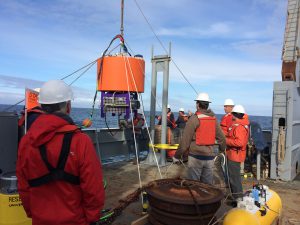An environmental sample processor (ESP) was deployed on May 23 to monitor for harmful algal blooms (HABs) and their toxins off the coast of La Push, Washington in the Olympic Coast National Marine Sanctuary, by scientists with NOAA and the University of Washington. This is the first time the ESP, essentially a ‘lab in a can,’ will be equipped with sensors that can identify the algae species and the presence of the toxin domoic acid (DA) in the Pacific Northwest, whichwill provide autonomous, near real-time measurements of offshore DA and toxin producing HAB species concentrations.

The ESP mooringisnear the Juan de Fuca eddy in a knowntransport path for offshore Pseudo-nitzschia blooms (a common Pacific harmful algal species) onto coastal beaches where they can contaminate shellfish. Information on bloom toxicity and biomass will be made available directly to state coastal managers and public health officials, includingcoastal Tribes, and will be served via the Northwest Association of Networked Ocean Observing Systems ( NANOOS ) Visualization System ( NVS ). These data will also be made available to researchers at UW to facilitate development of an integrated forecast product. Coastal managers will use the early warning information provided by ESPfriday to inform proactive shellfish toxicity testing and facilitate timely decision making on shellfish harvesting opportunities and closures.

This ESP deploymentis part of a collaborative IOOS-funded Ocean Technology Transition project ( Operational Ecological Forecasting of Harmful Algal Blooms in the Pacific Northwest Using an Environmental Sample Processor ) led by UW and NWFS, and involving multiple partners from NCCOS, MBARI, NANOOS, Spyglass Technologies, WHOI, and the Northwest Indian College.
For more information, contact Tina.Mikulski@noaa.gov or Greg.Doucette@noaa.gov.
